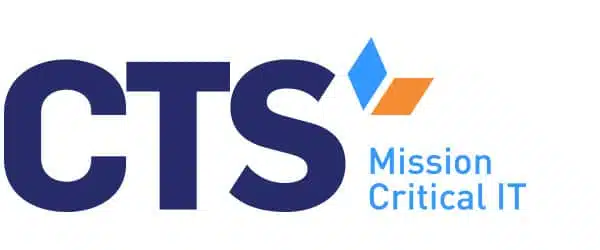Modern business operations rest on a reliable, secure, and well-integrated IT environment. As systems grow more complex and teams juggle a mix of hardware, software applications, and cloud-based tools, gaps often appear—sometimes without warning.
These cracks don’t always start with major failures. A slow response time, misconfigured access controls, or mismatched software can gradually erode operational efficiency.
Conducting an assessment of IT infrastructure offers a clear view of what’s working, what isn’t, and where technology may be holding the organization back. But without regular assessments, even minor issues can evolve into serious risks, from unplanned downtime to costly data breaches.
What is an IT Infrastructure Assessment?
An IT infrastructure assessment is a full-spectrum analysis of the systems and processes that support day-to-day business operations. It examines everything—hardware, software, network configurations, storage, access controls, and more—through the lens of functionality, performance, and risk.
The goal is twofold: understanding how technology supports current operations and identifying potential risks or inefficiencies that may compromise long-term success. This includes looking at how hardware software combinations perform under daily load, how well systems communicate across departments, and whether existing security measures are keeping pace with threats.
Teams often discover critical insights during this process. Unused or duplicated software applications, outdated hardware that inflates total cost of ownership, and inconsistent access permissions that create security vulnerabilities are just a few common findings. The assessment also evaluates how infrastructure supports rapid response time and scalability, both of which contribute to a lasting competitive advantage.
Why Organizations Need to Conduct Regular IT Infrastructure Assessments
Most IT environments aren’t built in a day. Over time, systems are added, patched, upgraded, and occasionally forgotten. Without a structured review, inefficiencies stack up, dragging down performance, draining resources, and exposing the organization to unnecessary risk.
An IT infrastructure assessment puts a stop to that drift. It provides clarity. With a clear picture of the infrastructure, decision-makers can take meaningful action to improve operational efficiency and reduce long-term costs.
Security sits at the center of this process. Gaps in access controls, inconsistent update schedules, and unmonitored endpoints are often invisible until something breaks, or someone breaks in. Routine assessments help enforce strong security measures, ensuring defenses grow and change alongside cyber threats.
There’s also the strategic benefit. Identifying potential performance bottlenecks, retiring underused software, or upgrading slow hardware can boost response time and free up resources for innovation. That shift strengthens competitive advantage and supports the bottom line.
Learn more: Building Out School IT Infrastructure: How MSPs Can Help
IT Infrastructure Assessment Checklist
This checklist breaks down the process into clear, manageable steps. Each phase builds on the last, creating a full picture of your environment and how to improve it.
1. Define Business Objectives
- Identify core operational goals
- Map IT’s current role in achieving them
- Ask staff for feedback on their experiences with IT systems
- Highlight known issues and pain points
2. Inventory All Hardware and Software
- Catalog servers, endpoints, networking gear, mobile devices
- Document software applications by department and use
- Identify licenses, expiration dates, and version statuses
3. Review Network Infrastructure
- Map network topology (switches, routers, firewalls)
- Test bandwidth, latency, and overall network health
- Check wireless coverage and access point placement
4. Evaluate Security Measures
- Assess firewall rules, antivirus/EDR coverage, and intrusion detection
- Review access controls, password policies, and MFA usage
- Identify unsecured endpoints and shadow IT use
- Validate backup systems and disaster recovery plans
5. Analyze System Performance
- Check uptime logs, load capacity, and system responsiveness
- Evaluate cloud service utilization and scalability
- Identify integration issues between tools or platforms
6. Assess Compliance and Risk Exposure
- Check for industry-specific compliance gaps (e.g., HIPAA, FERPA)
- Conduct a formal risk assessment of key systems
- Identify data handling or retention issues
7. Calculate Cost of Ownership
- Analyze maintenance costs, licensing, and upgrade cycles
- Compare budget versus actual spend
- Identify areas where consolidation or retirement could reduce costs
8. Deliver Recommendations and Action Plan
- Highlight critical fixes, quick wins, and long-term improvements
- Prioritize based on risk, impact, and cost
- Create a roadmap to align IT with business operations
Common Issues an Assessment Can Uncover
Even well-managed systems have their blind spots. Without taking a step back, it’s easy to miss what’s quietly draining performance or exposing the organization to risk.
Shadow IT
Employees downloading unsanctioned software applications or using cloud services outside IT’s control is shadow IT. These tools might seem harmless, but they sidestep access controls and open doors to data breaches. A comprehensive assessment brings these hidden risks into the light.
Outdated Hardware
Aging hardware is another common issue. Devices long past their recommended lifecycle tend to run slower, fail more often, and increase the total cost of ownership through constant maintenance. Outdated firmware and unsupported operating systems can also introduce vulnerabilities that security measures can’t fully contain.
Redundant Systems
Assessments often reveal misaligned or redundant systems—tools doing the same job across departments with no coordination. This hurts operational efficiency, complicates integration, and slows response time when changes are needed.
Strategic Misalignment
Technology should move the organization forward, not just keep it afloat. When IT doesn’t match business objectives, every upgrade feels like a guess. An assessment turns that guesswork into informed action.
Learn more: Digital Transformation: Challenges and Solutions
Ready to Take a Closer Look at Your IT Infrastructure?
Systems evolve, threats adapt, and expectations rise. Without regular assessments, small inefficiencies and overlooked risks compound over time, making it harder to stay secure and responsive.
Assessing IT infrastructure builds clarity, strengthens decision-making, and puts technology back in service of the mission. With the right insights, your organization can reduce risk, improve performance, and position itself for smarter growth.
Start with a simple conversation. Offer your IT team, admin staff, and customer-facing workers the opportunity to comment on where IT systems may be causing frustration. From there, you can identify areas for improvement, and take the conversation to the assessment level, paying particular attention to potential problems.
Download our free guide to learn more about developing an IT strategy and unified IT infrastructure.




